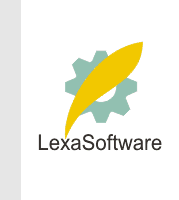Filmscanners mailing list archive (filmscanners@halftone.co.uk)
[Date Prev][Date Next][Thread Prev][Thread Next][Date Index][Thread Index]
Re: filmscanners: film flatness in Nikon 4000
Anyone who ever used a camera or an enlarger, or basically any other
device of that nature, knows that the depth of field is dependent upon
the aperture size. In the case of the enlarger (or film scanner) the
depth of field of the focus range depends upon the length of the light
path and the aperture of the lens projecting onto the CCD.
The HP Photosmart does this through using a bright enough light source
to allow for a stopped down lens, and folded light path, using mirrors
to allow for a fixed focus lens to be used. Of course, that device is
not the creme of the crop, by any means. Most scanners use an auto or
manual focus system to pinpoint focus. They have enough depth of filed
built in to cover typical film curvature.
Yes, enlargers can be bought with glass neg carriers, but guess what,
they actually degrade the image result. I've tested this with my own
enlarging system. (Besseler, Nikkor lenses) You are adding 4 new
surfaces, none of which are perfect in surface or color, even if they
are optical glass, and all of which are very close to the focal point at
the film plane. Add to that internal reflections within each sheet of
glass, potential dust scratches and dirt, if they are not perfectly
clean, and potential damage to the film. Glass sandwiching is done
sometimes with a viscose wet gate, to help reduce the internal
reflections of two of the surfaces, and having the outer surfaces far
enough away from the film plane to me out of the focal range. But using
a glass carrier with a 35mm film scanner doesn't make it, as far as I'm
concerned. Further, it requires removing the film from slide mounts
(more potential damage).
All this just to make up for Nikon's not using a light source with
enough intensity to allow for stopping down the lens, or coming up with
a better method to control film curvature. For a company that knows
optics, I'm surprised.
This isn't about being professional equipment, its about a compromise
between certain advantages of the LED lighting system against certain
disadvantages. Only each user can determine the value of each.
Art
PAUL GRAHAM wrote:
> Don't see why anyone is surprised to learn that there is film curvature with
> 35mm negs in the Nikon scanner.
> Every pro lab knows that you have to use glass holders for film when working
> to critical sharpness, 35mm or 5x4". and 4000 dpi needs critical
> sharpness...
> Nikon makes and sells a glass holder for the scanner (and the 8000 too) so
> what's the problem?
> critical work - with traditional enlargers or with high end scanners,
> demands some care and attention, and it's actually slightly reassuring that
> the focus is so precise IMO.
>
> It seem this is not really a fair criticism of the scanner. It is intended
> for semi-professional work after all.
> Use the glass holder, (with anti newton glass if you have that problem) and
> you will see astounding differences in your image sharpness.
>
> pg
|

